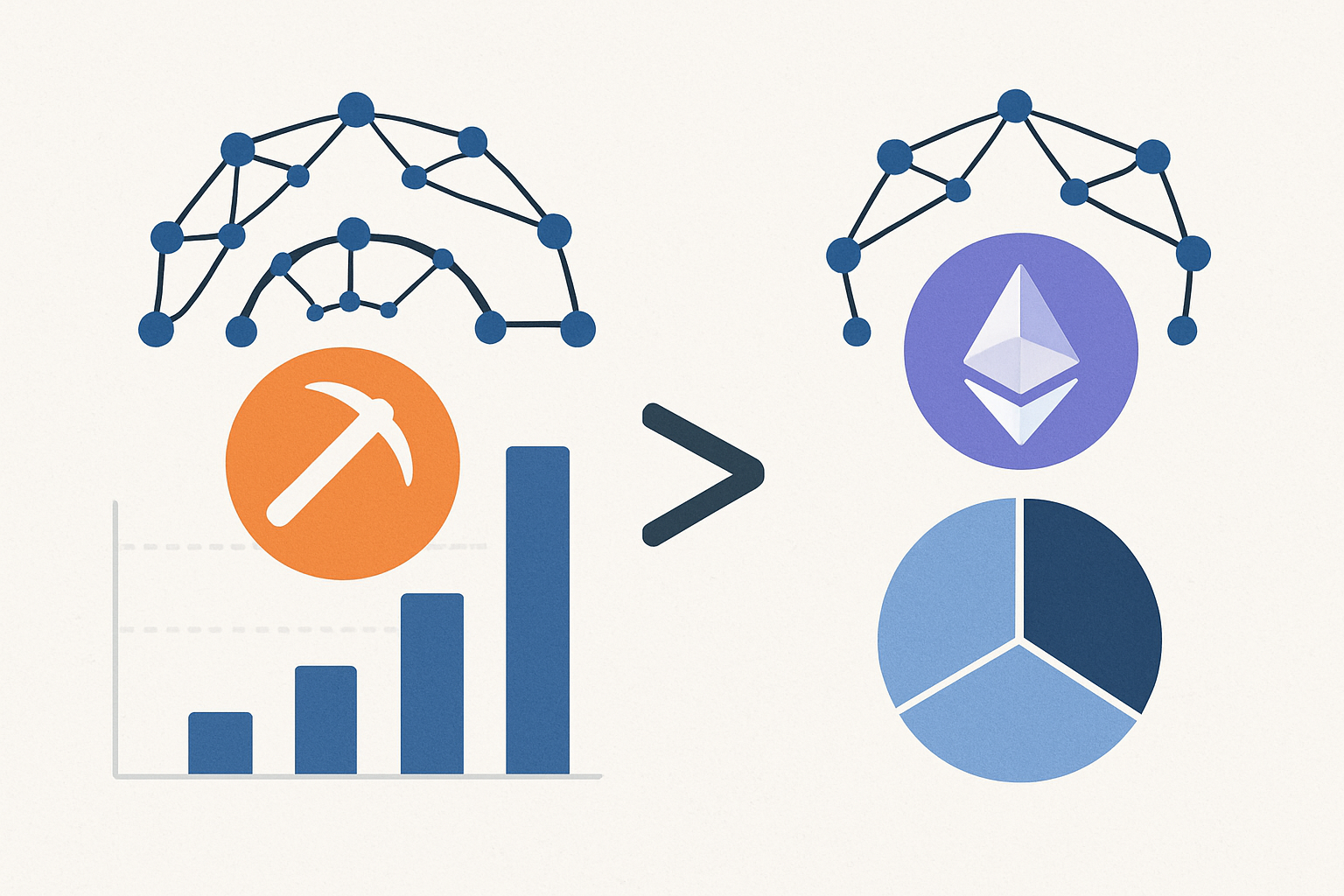Proof of Stake vs Proof of Work - Security Risks Comparison


When it comes to the debate between Proof of Stake and Proof of Work consensus mechanisms, the spotlight often falls squarely on security risks.
Proof of Work and Proof of Stake are the two big players in blockchain consensus methods that keep transactions secure and the network running smoothly. PoW relies on miners burning through serious computing power and energy to crack tough cryptographic puzzles. PoS uses a different approach by handing validation power to users based on how much cryptocurrency they stake or lock up as collateral. Validators earn rewards matching their stake but risk financial penalties if they misbehave.
Basic Security Concepts Behind Proof of Work A Quick Dive Into the Nuts and Bolts
Proof of Work plays a important role in keeping blockchain networks secure by relying on computational difficulty and high energy consumption. Miners scramble to crack cryptographic puzzles that demand a mountain of hashing power and electricity. This setup means trying to tamper with past blocks isn’t just tough but a massive drain on resources, making attacks very expensive to attempt. On top of that, the spread of hash power among miners adds another layer of protection because no single miner has an easy shot at taking over.
Getting to Grips with the Security Basics of Proof of Stake vs Proof of Work
Proof of Stake safeguards networks by handing out block validation rights based on how much cryptocurrency participants hold. Validators risk losing their staked coins if they play dirty, which provides a pretty strong financial nudge to keep things honest. This method cleverly aligns everyone’s incentives with the network’s overall health, encouraging trustworthy behavior without the need for heavy-handed policing.
Typical Security Risks Associated with Proof of Work
When it comes to Proof of Work, there are a few security risks that tend to crop up more often than not. It’s not just about the math or the algorithms—these issues sneak in through the very way the system operates. While POW has its strengths, you can’t ignore the usual suspects lurking in the shadows, ready to cause headaches if you are not careful.
- A 51% attack remains the biggest headache, where miners controlling the lion’s share of the hash rate could twist transactions or pull off double spends with relative ease.
- Selfish mining tactics sometimes give miners a sneaky advantage by holding back blocks and subtly steering how the network perceives the blockchain.
- The colossal energy appetite for mining stirs up security worries, especially if power prices take a nosedive or mining operations cluster around cheap energy hotspots.
- When mining power piles up in large pools or gets hoarded by dominant hardware, it chips away at decentralization and leaves the network more vulnerable to collusion or censorship.
Typical Security Concerns in Proof of Stake
When it comes to Proof of Stake, security worries tend to crop up pretty quickly. It’s not all smooth sailing, and understanding the common pitfalls can save you from some nasty surprises down the road. Let’s dive into the usual suspects that keep experts up at night.
- The nothing-at-stake issue basically lets validators cast votes on multiple competing chains without facing any consequences, which can stir up forks and make reaching consensus a bit of a headache.
- Long-range attacks sneak in by exploiting old keys to rewrite blockchain history, opening the door to double spends or chain rewrites that can really shake things up.
- When most of the stake ends up in the hands of a handful of fat cats, it chips away at decentralization and boosts the chances of some not-so-friendly collusion.
- Validator collusion or bribery is a tricky threat to the network’s integrity, especially if a group wielding a large stake decides to join forces with some shady motives.
Taking a Closer Look at Resistance to 51% Attacks
In PoW pulling off a 51% attack means you need to control most of the computational power which doesn’t come cheap—think massive energy bills and serious hardware investments. PoS asks a different kind of commitment. Someone has to hold over half of the staked coins, putting their own assets on the line and making the attack a risky financial gamble. Both systems share the headache of majority control risks but while PoS ties security directly to economic skin in the game PoW leans on raw physical mining power.
| Aspect | Proof of Work (PoW) | Proof of Stake (PoS) |
|---|---|---|
| Vulnerability | Faces the risk of a 51% attack if one party somehow grabs most of the hashing power | Vulnerable when a single entity holds the lion's share of the stake |
| Cost to Attack | High, thanks to the need for expensive hardware and a gulp of energy that would make your electric bill cry | Comes with a steep financial risk since the attacker’s stake can be slashed, which hurts where it counts |
| Attack Examples | Bitcoin Gold (2018), Ethereum Classic (2020) - both learning experiences for the community | No large-scale 51% attacks on record yet, though it’s not outside the realm of possibility |
| Consequence of Attack | Can cause network reorganizations and double spending, leaving users feeling a bit uneasy | Often leads to stake slashing and significant economic pain for the attacker |
| Ease of Recovery | You can bounce back via reorganization, but it’s usually a costly journey | The attacker usually gets punished pretty swiftly through loss of their stake |
How Centralization Plays a Role in Security
Centralization can really throw a wrench in security by letting just a handful of players call the shots when it comes to consensus. Take proof of work for example. Mining pools bundle their hash power and sometimes control more than half the network. This can open the door to censorship or chain reorganization. On the proof of stake side the risk appears when a small clique holds a large chunk of tokens. This gives them too much sway over which blocks get validated. These patterns throw a serious curveball at decentralization and chip away at trust.

Thinking About Economic and Environmental Security—A Balancing Act Worth Our Attention
PoW consumes a lot of energy. This helps keep things secure but raises concerns for the environment and wallet, casting a shadow over the network's long-term sustainability. Meanwhile, PoS takes a different route by using economic penalties and rewards to guide validators. It slashes energy consumption by a large margin.
Strategies for Reducing Risk and Improving Security (with a Few Tried-and-True Tricks)
When comparing proof of stake vs proof of work, both have evolved with some neat security tricks like checkpointing in PoW, which is often the go-to to halt pesky deep chain reorgs and slashing in PoS that doesn’t take kindly to dishonest validators. Hybrid consensus models are popping up more frequently. They blend pieces of both worlds to juggle security, decentralization and efficiency without dropping the ball.
Picking the Security Model That Fits Like a Glove
PoW usually fits blockchains that put the highest priority on security and decentralization, even if that means burning through quite a bit of energy. Bitcoin being the classic example that comes to mind.
PoS often wins the spot on platforms aiming for energy-efficient security along with speedy transaction finality, like what you see with Cardano and Ethereum 2.0 they really nailed that combo.
Projects get creative, mixing hybrid or custom consensus methods to strike a decent balance between PoW's ironclad security and PoS's much-needed scalability perks.






